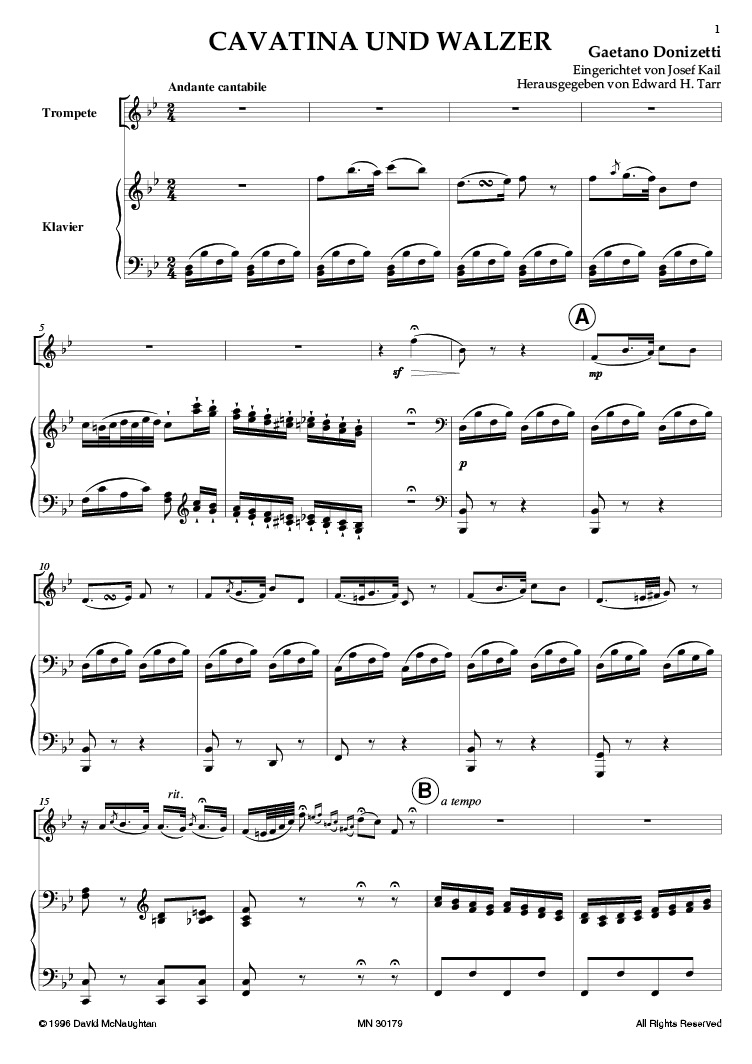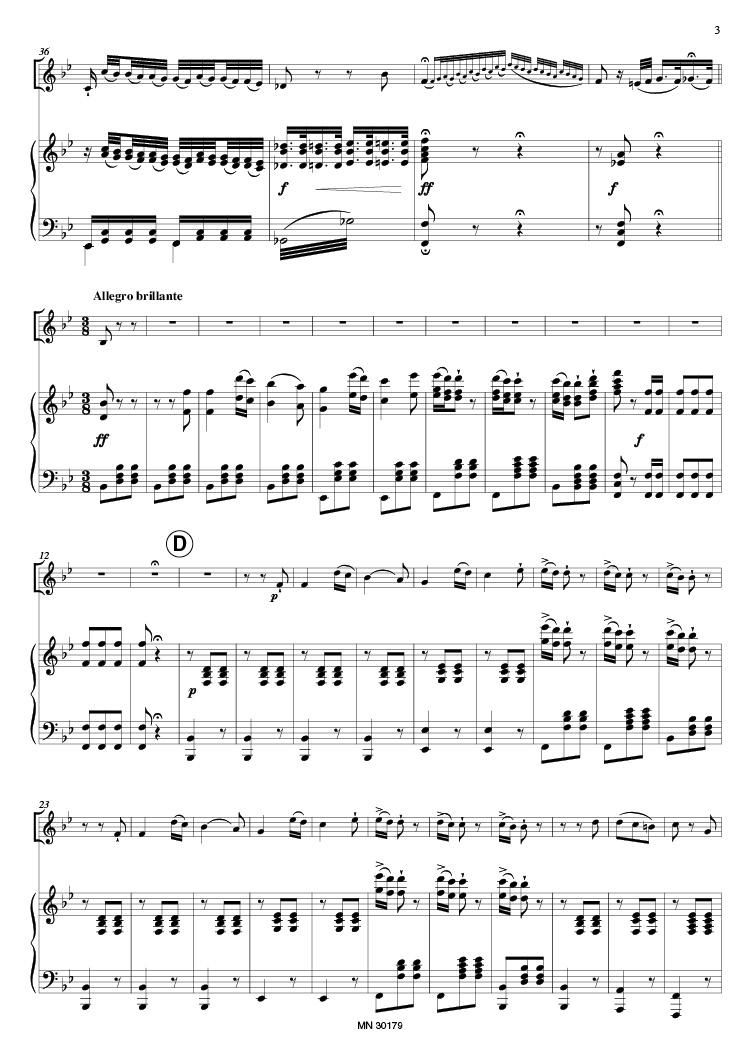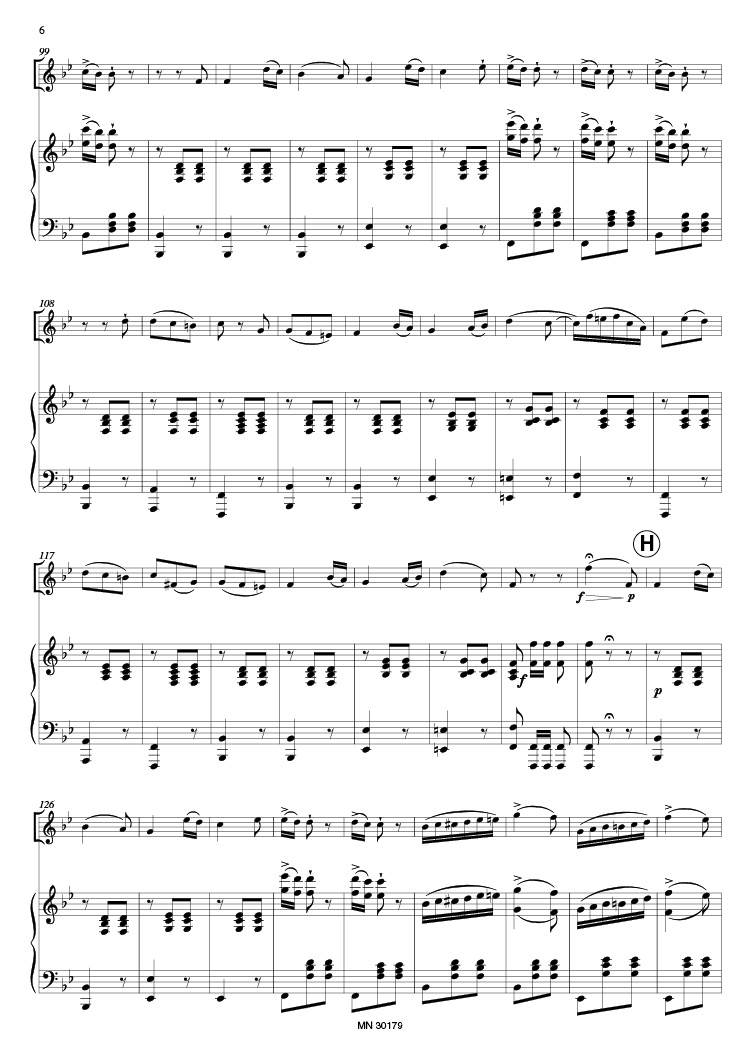
Donizetti Cavatina und Walzer
Instrumentation: Trumpet and PianoDifficulty (I-VI): III
Parts included: Trumpet in Bb, Piano
Series: The Kail Legacy
Editor: Edward H. Tarr
The present work is a potpourri, that is, a compilation of two movements of differing origin. Potpourris, together with themes and variations, were a favorite category of composition during the entire 19th century. A date of performance of this particular work is not known.The title (Cavatina von Ricci - Tadolini Walzer / zur Oper der Liebestrank) presents us with several problems. As far as the Cavatina is concerned, it is Adina's aria, "Prendi; per me sei libero", from the end of the second act of Gaetano Donizetti's (1797-1848) comic opera L'Elisir d'amore, which was premiered in Milan on May 12, 1832. Kail's arrangement was thus made after this date. The librettist of Donizetti's opera was Felice Romani (1788-1865, after Scribe's Le philtre, which was set to music by Auber and first performed in Paris in 1831). The name of Ricci therefore has no meaning which we have yet been able to discover. There are two possible origins for the Tadolini Waltz, a piece which does not exist in Donizetti's opera. Both are connected with young ladies. The more likely possibility is the famous soprano Eugenia Tadolini (1809 - after 1851), who sang in many performances of works by Donizetti, including the part of Adina in L'Elisir d'amore in the 1834 Vienna performance. We thought, however, that Kail was confused, for the waltz seems to refer to the Taglioni-Walzer ... Zur Erinnerung an die gefeyerte D[emoise]lle Marie Taglioni by Johann Strauss Sr., Op. 110, published in Vienna in 1839. Marie Taglioni (1804-1884) was a celebrated dancer, light and frail, a symbol of her time, who has been called "the ideal embodiment of the romantic image". However, the Strauss piece - of which a photocopy was graciously made available to us by the publisher Hans Schneider, Tutzing - bears no relationship whatsoever to Kail's piece. The good professor must have been so bewitched by Taglioni or Tadolini as to make his potpourri's combination of the two unrelated tunes quite successful indeed.
Kail's transcription exists in two different versions: the one published here, in B-flat, for F trumpet (playing in F) or B-flat fluegelhorn (playing in C), and a second one a whole step higher for the valved trombone. (The original key of Donizetti's Cavatina was F major.) It is quite interesting to compare the cadenzas written by Donizetti and Kail for the Cavatina. (In our edition, Donizetti's original version appears in an appendix to the piano part.) The differences between them show how improvisation was an integral part of performance practice, each individual coming up with his or her own solutions, resulting in truly personal performances Kail's trombone cadenzas are different again; like the vocal model, they display a wider range than those for trumpet. To give performers an idea of how such cadenzas may appear, we have added a separate sheet to the trumpet part containing those of the editor for the Waltz.



